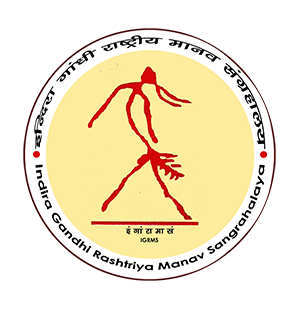वान्चो
ग्राम: सेनुआ
जिला: लौंगडिंग, अरूणाचल प्रदेश
संकलन वर्ष : 2016
वांचो नागा जनजाति के रूप में जाने जाते हैं। वे उत्तरी नागालैंड सीमा पर पूर्वी अरुणाचल प्रदेश के लोंगडिंग, कानुबारी, पोंचाउ और वाक्का क्षेत्र में लगभग 50 गांवों में फैले हुए हैं और म्यानमार के साथ अंतरराष्ट्रीय सीमा साझा करते हैं। ऐसा माना जाता है कि वे नागालैंड से इस स्थान पर आए हैं। यह क्षेत्र पहाड़ियों, घने जंगलों, वनस्पतियों और जीवों से समृद्ध है। गाँव सघन आबादी वाले हैं, पहाड़ियों के ऊपर और ढलानों पर स्थित हैं। गांवों को दो या दो से अधिक भागों में विभाजित किया जाता है, जिसे खेल कहा जाता है, जिनमें सामान्य लोग, मुखिया के घर और युवागृह होते हैं।
मकान की एक छोर पर अर्ध-वृत्ताकार के साथ आयताकार आकार में बने होते हैं। आधी संरचना जमीन पर और आधा मचान पर बना होता है। कुछ क्षेत्रों में भौगोलिक संरचना के आधार पर यह पूर्ण रूप से जमीन पर बनाया जाता है। घर में एक प्रवेश कक्ष होता है जिसमें धान कूटने की जगह, लॉग ड्रम, महिलाओं के लिए एक कक्ष, शयन कक्ष और खाना पकाने के लिए चूल्हा होता है। मकान का वह हिस्सा जो मचान पर बना होता है उसमें पुरुषों का एक कमरा, एक या दो अलाव और शिकार की ट्राफियां, कपाल और ढाल रखने की जगह होती है। यह उठा हुआ हिस्सा सामान्यतः छत व एक बरामदे में समाप्त होता है। पेड़ के तने से बनी सीढ़ी बरामदे को अहाते से जोड़ती है।
प्रत्येक घर के मध्य स्तंभ में एक अनुष्ठान स्थान होता है। वांचो कई देवी-देवताओं में विश्वास करते हैं। उन्हें अपकारी और परोपकारी आत्माओं में दृढ़ विश्वास है। वांचो में से कुछ ने ईसाई धर्म अपना लिया है और कई गांवों में चर्च बन गये है। वांचो लोगों का जीवन त्यौहारों से भरा है और उनका मुख्य त्यौहार ओरिया है। इसे अच्छी फसल की कामना से मनाया जाता है।
निर्माण सामग्री में मुख्य रूप से लकड़ी, बल्ली और खंभे, छत के लिए बांस और उठाए गए फर्श के लिए बांस की चटाइयाँ तथा छत के लिए ताड़ के पत्ते का उपयोग किया जाता है। मकान के केन्द्रीय स्तंभ छत से ऊपर तक निकले होते है। अधिकांश सामग्री जैसे बड़े लॉग ड्रम, धान, काटने की मेज चावल सुखाने की मेज, बिस्तर और स्टूल लकड़ी के एक ही टुकड़े से बनाया जाता है। एक मुखिया का घर अधिक बड़ा होता है तथा केन्द्रीय स्तंभ पर नक्काशी होती है।
वांचो झूम खेती करते हैं। वे लकड़ी की नक्काशी के विशेषज्ञ हैं और टोकरी, मिट्टी के बर्तन बनाने और बुनाई में भी कुशल हैं। वे एक स्थानीय वनस्पति की मदद से बकरी के बालों को रंगते हैं और इन्हें विभिन्न वस्तुओं पर लगाकर सुंदर रूप प्रदान करते हैं।
Wanchoo
Village: Senua
District: Longding, Arunachal Pradesh
Year of collection: 2016
The Wanchos are Popularly Known as a Naga Tribe. They are spread in nearly 50 Villages in Longding, Kanubari, Pongchau and Wakka area of eastern Arunachal Pradesh bordering Northern Nagaland and sharing international boundary with Myanmar. It is believed that they migrated to this place from Nagaland. The area is mountainous and covered with dense forests and rich in flora and fauna. The villages are thickly populated and situated on the top of the hills and sometimes on a slope. Villages are divided in two or more divisions known as khel having houses for general people, chief and dormitories.
Houses are made in rectangular shape with one end semi-circular. Half of the structure is built on the ground and half on raised platform on piles. Depending on the geographical structure in some areas it is entirely built on the ground. The house consists of an entrance room with a place for pounding rice, log drum, a central women’s compartment with sleeping rooms and a fire place for cooking food. The structure which is made on the raised platform has a common men’s room with sleeping rooms, one or two fireplaces and a place for keeping hunting trophies, skulls, gongs and shields.. This raised structure finally ends in a veranda continuing as terrace. A tree trunk staircase connects the veranda with the yard
In every house there is a ritual place in one of the central pillars of the house. The Wanchos believe in many gods and goddesses. They have a strong faith in malevolent and benevolent spirits. Some of the Wanchos have adopted Christianity and the Church has been constructed in many Villages. The life of the Wanchos is full of festivals and their main festival is Oriya. It is celebrated for a good harvest.
The building materials are wood mainly used as balli and pillars, bamboo for roof and woven flattened bamboo for the floor of the raised platform, and palm leaves for the thatched roof. The central posts reach above the ridge. Most of the articles like large log drum, rice pounding table, rice drying table, beds and stools are made from single piece of wood. A chief’s house is larger and has wood-carvings on the central posts in the common room.
The Wanchos practice Jhum cultivation. They specialise in wood carving and are also skilled in basketry, pottery and weaving. They dye goat’s hair with the help of a local herb and attach it to various objects to give it a beautiful look.



